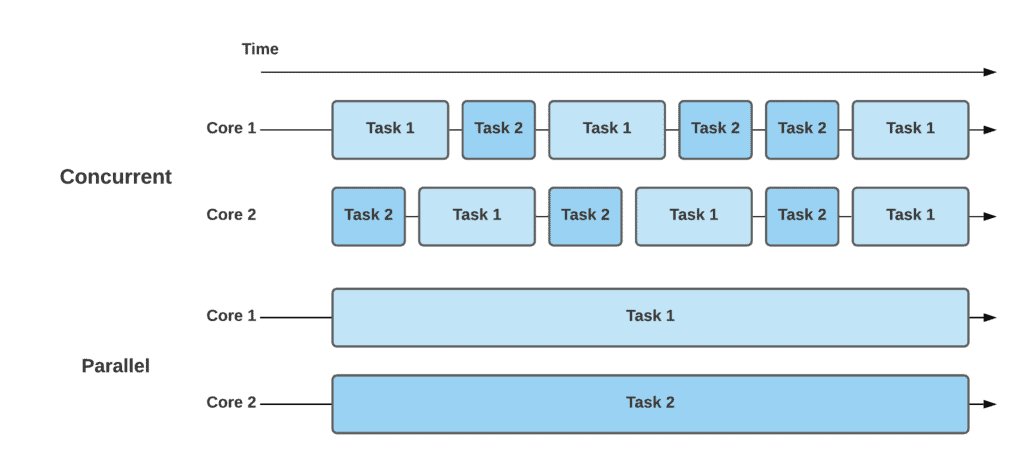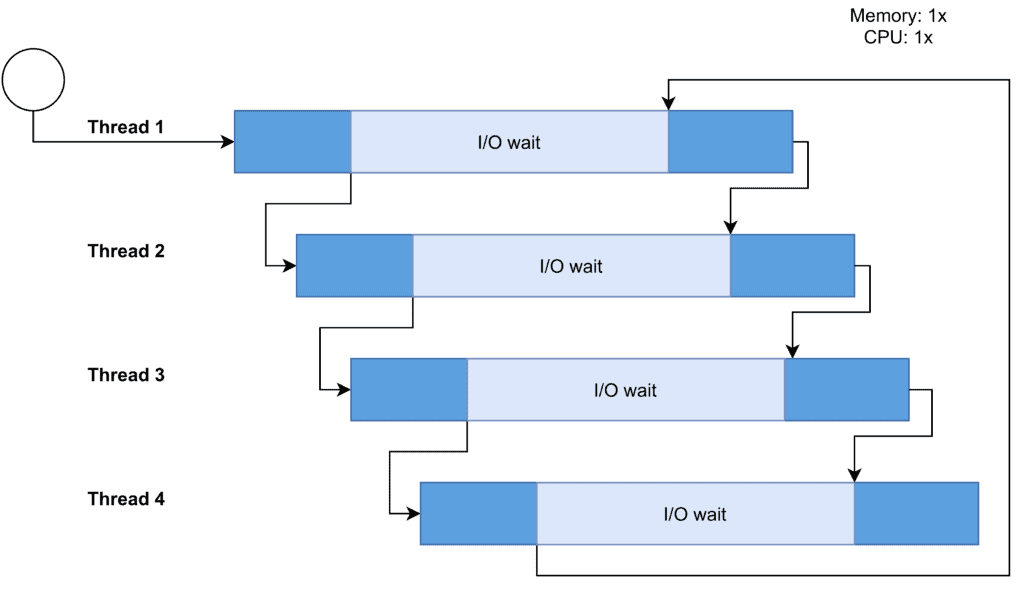What is it?
Multi-threading allows for a single process to have multiple running threads, each with its own code segment. These run either concurrent or parallel within the process.

Concurrency
Concurrency executes task in an overlapping time period, but neither task will be running at the same instant: the CPU adjusts processing time per task and switch contexts. One task can begin before another is completed, but then one is waited while other is running. Bottom line: no task is running at the same time, when one is running, another is awaiting.

Parallelism
Parallelism executes independent tasks in the same instant of time. Differently from concurrency, tasks run simultaneously in different CPU cores, or even different computers.
Potential Issues
Because multiple threads can access the same memory address, it’s possible that different tasks try to interact with the same piece of data. This can cause issues like:
All of these can be summed in a single concept: trying to interact with the same data simultaneously. If a task wants to write something in a file, and another task deletes it in the middle of it, that surely is going to cause a problem.
To prevent these issues, the programmer needs to implement an algorithm or a programming construct which explicitly prevents tasks from accessing the same data at the same time. These can be: